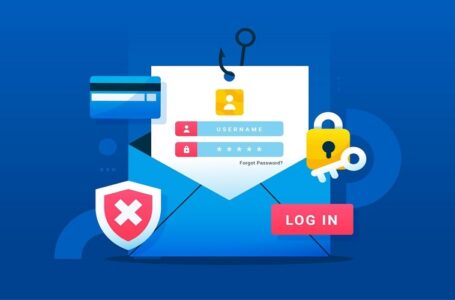Bitdefender Launches New Email Protection Capabilities for Consumers
The 4 Pillars of SEO You Need to Know

SEO (search engine optimization) may appear difficult. However, if you own a business, it may be one of the finest strategies to increase online visibility for it. It offers a more affordable source of consistent organic traffic than alternative alternatives. And believe me, once you do, you’ll see that it’s not that difficult after all. In fact, after working with SEO for a while, you might even start to enjoy it. Look at the four SEO pillars you should be familiar with.
Pillar 1: On-page SEO
Just like the name suggests, on-page SEO involves optimizing all of your website’s content. The degree to which web crawlers can read your content will determine how well your site ranks on search engines, so it’s important to produce high-quality content with optimized metadata.
1. Focus on your content
To strengthen your on-page SEO, make sure that all of your content is relevant, informative, and well written. To maintain relevance, your content must provide answers to your audience’s search queries. To find out which search queries are relevant to you, do some Googling from the perspective of a customer. Search up relevant terms and questions relating to your business, and see what comes up under Google’s “people also ask” section. You should also take note of the autocomplete suggestions in the search bar. Once you know what content is being rewarded by Google, you can start to formulate a content outline that improves on the content that’s already ranking. If your website’s content can provide answers to your audience’s main queries, search engines will view your content as credible and authoritative, which will help you rank higher in search.
2. Optimize for relevant keywords
Your website should also utilize keywords and search terms that mimic how your audience searches for content. If you use these keywords, Google will see that your content is relevant within your industry, and will serve your content to your audience. Incorporate keywords into your metadata, headings, URLs, body text, and alt text. This will indicate to Google that your website’s content is relevant to your audience’s queries which will help you rank higher in search.
Top tips:
- Don’t forget to optimize your metadata. Metadata helps crawlers read your website, so you need to make sure your metadata is communicating the essence of your web pages.
- A key tip when optimizing your keywords is utilizing one longtail keyword per page. This will show crawlers that your page is addressing search queries, which will heighten your site’s authority.
Pillar 2: Off-page SEO
Off-page SEO involves anything you’re doing outside of your website to optimize your presence in search. When it comes to off-page SEO, it’s important to tell search engines what others think of your website, which is where backlinks come in. Backlinks are links to your website that are hosted on other websites. Sometimes, you can get backlinks without doing anything at all, but if you’re a business with a smaller online presence, you’ll often have to put in the work to receive backlinks. Backlinks can be indicative of your website’s authority, so it’s important to build a web of quality backlinks. Whilst it may be tempting to purchase backlinks, search engines penalize websites with high volumes of spammy backlinks. So, when it comes to your backlink strategy, aim for quality over quantity.
Top tips:
- Find a backlink outreach strategy that works for you. This may involve reaching out to authoritative websites and notifying them that you have content relating to their web pages. Or, you may choose to write free content for websites so they can reward you with backlinks in return.
- Try to win backlinks from low, medium, and high authority sites as this indicates natural linking to search engines.
- Maintain a strong social media strategy that links back to your website and web pages. Although social media links aren’t technically counted as backlinks, they still drive valuable traffic to your website, making this a good SEO strategy.
Pillar 3: Technical SEO
Technical SEO dictates the way users and search bots move through your website. You should ensure that your website has a logical architecture and that it’s easy to navigate for both users and web crawlers.
1. Maintain a clear site structure
Your website structure is very important. Have you ever been on a website where certain pages are hard to find, or the navigation menu is cluttered? If users and search bots find your website difficult to understand, this will detract from your site’s credibility. So, it’s important to structure your site logically, so it can be easily browsed by users and search bots. A general rule of thumb is to ensure that any webpage can be accessed in under 3 clicks, as this will keep your site easy to navigate.
2. Page speed
Page speed is a crucial component of technical SEO because it strongly correlates with user experience. Today, it’s been discovered that users are more likely to leave a page if they have to wait more than two seconds for it to load. Run your web pages with Google Pagespeed Insights to make sure they load quickly. You may reduce load time exactly by using this tool. Your bounce rate—the percentage of users who leave your website after visiting only one page—will be reduced by improving page speed.
Top tips:
- Keep your website mobile-friendly. All websites should be created with a mobile-first approach, as over 90% of the global population use their mobile phones to search.
- Keep responsive design elements front of mind. Make sure that your website is optimized for an array of screen sizes, as people’s browsing habits are varied, and many households use multiple devices.
- Make sure there are no broken links (or links leading nowhere) on your website.
- Utilize internal links to show crawlers the logical connections between your web pages. This will give your pages and site structure greater authority according to Google.
Pillar 4: Local SEO
It’s crucial to think about local SEO if your company has a physical location. Enhancing your site’s presence in local search results is what local SEO entails. Let’s take the example of you owning a bakery. Strong local SEO will ensure that your company appears at the top of Google search results when a local customer puts in “bakery near me.”
Top tips:
- Google My Business is a great tool for businesses with physical stores. It helps people in your local area find your store when they’re searching for services related to your business. Since it’s linked to Google Maps, it tells people where your business is, and how to get there. It will also display your opening hours, as well as an image of your store, providing potential customers with ample information about your business.
- Reviews are another invaluable tool when it comes to local SEO. These days, people are highly reliant on reviews when purchasing goods and services. Whilst they’re good for customers, reviews are also important for search engines. A high volume of positive reviews will tell Google that your business has great authority, making your store more likely to come up in search.




